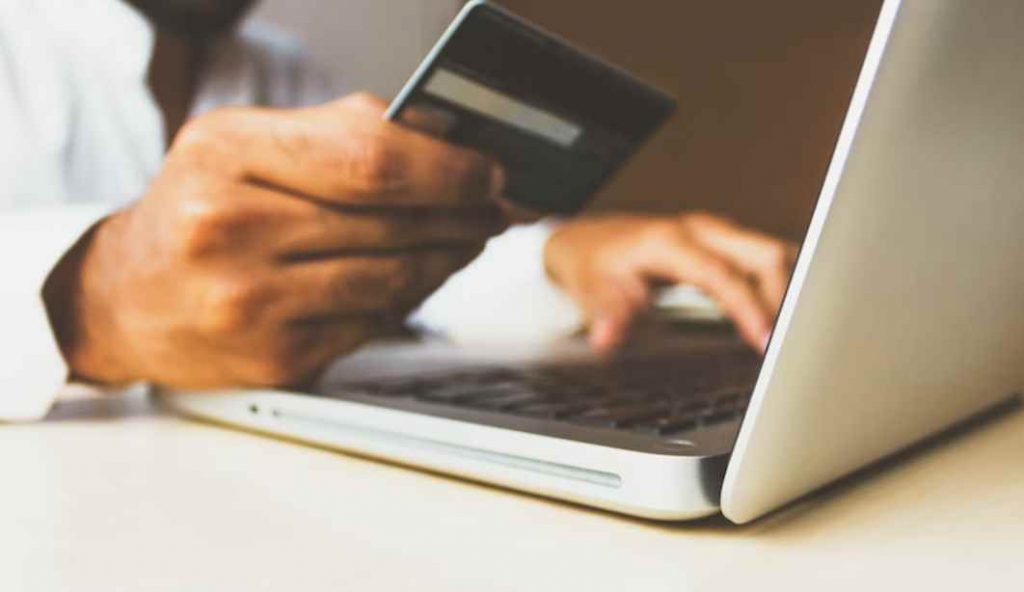The digital age comes with plenty of risks. Your personal data ending up in the wrong hands is one of those risks.
It can happen in many ways. You may get hacked – or reveal sensitive information on social media yourself by accident. Your internet traffic can get intercepted – or an online service you use may suffer a data breach.
Sounds scary? It’s because it is. But fear not: these seven actions are within your power to take to prevent this from happening.

1. Be Careful When Entering Your Banking Details
Let’s imagine you need some help with your homework, so you find a service and are about to pay for papers on WritePaper.com using your credit card. Before you enter its details, go through this checklist:
- Is the connection secure? (The HTTPS protocol should be on, and you shouldn’t be using public Wi-Fi.)
- Is the payment gateway trustworthy? (The list includes Stripe, PayPal, etc.)
- Is the service itself trustworthy, too? (Don’t enter your credit card details for shady free-trial offers!)
If you want to take it a step further, check with your bank if you can get a virtual account number. It’s a temporary number that expires after a while, so no one will be able to flaunt your hard-earned money using it years later.
2. Do a Social Media Audit
Social media is a goldmine for those who are after your personal information. Most of the time, they don’t even need to hack into anything: people reveal plenty of sensitive data themselves.
How do you know you’re not one of such people? Take stock of your social media presence and see if you can tick the following off your to-do list:
- Restrict your privacy settings
First, close off your account to strangers online: set timeline visibility to friends only. Then, manage who can see your various posts – friends, friends of friends, etc.
- Review your friend/subscriber list
Can you remember how you met this or that user? If not, why would you trust them to see your posts?
- Avoid oversharing
Don’t tag your location in real time, for example. Don’t post photos of your documents (even if you think you’ve obscured all the sensitive data), either.
- Review your old posts
If there’s a hint of potential oversharing, delete that post – or make it visible only for yourself.
3. Keep Track of Corporate Data Leaks
Sometimes, it’s the company’s servers that get hacked – and there’s nothing you can do about it. But what matters is how you react when that happens.
First of all, keep track of recent data breaches. You can use platforms like Haveibeenpwned and Mozilla’s Firefox Monitor for this end. All you need to do is type your email address or phone number – and you’ll see if they’ve already been leaked.
If you find out your data has been compromised, you’ll want to:
- Verify you haven’t used the same password anywhere. If you have, change your password for those accounts and review the login history;
- Review your bank statements to spot any suspicious transactions (if your bank details have been leaked);
- Consider freezing your credit;
- Turn on multi-factor authentication if you haven’t yet.
4. Avoid Creating Unnecessary Accounts
You’ve probably been there. You want to get your hands on a free downloadable or oh-so-needed research paper, but it’s locked behind the account wall. So, you create an account, use it once, and forget about it for the next couple of years.
The problem is, your personal data still sits on that website’s servers. And one day, it might get compromised.
But if you still need to get behind the account wall, consider these two options:
- Use a temporary email service like 10-Minute Mail or Temp Mail;
- Create a disposable email account just for this kind of sign-up. Even if it’s exposed or hacked, it won’t pave the way to any other sensitive information or account access.
5. Use a VPN on Public Networks
If you’re a student, you must be spending a lot of time using public Wi-Fi. Keep in mind: “public” doesn’t equal “free”. Your dorm or campus Wi-Fi counts, too!
Using public networks as-is is a serious security risk. People connected to the same network may get their hands on your traffic. And that traffic may include your credit card details, passwords, and more.
Of course, not using public Wi-Fi is unlikely to be a viable option for you. So, this is where VPNs come in. A VPN encrypts all of the traffic that your device sends and receives. So, even if someone gets their hands on it, they won’t be able to make out any details.
6. Don’t Neglect Multi-Factor Authentication
This piece of advice is getting quite mundane, but it’s a crucial one, nevertheless. Here’s how it goes: if a service offers multi-factor authentication, don’t gloss over it – turn it on.
You’ll be glad you’ve done it when you receive a notification asking if it’s really you trying to log in from halfway across the world!
When it comes to the types of multi-factor authentication, there are plenty of them. Text messages and physical keys (like USB sticks), however, are the most secure so far.
7. Learn to Recognize Phishing Scams
Phishing scams are more rampant than ever, all because they can be quite successful. Their goal is to trick you into something that the scammer wants you to do. They may try to get you to:
- Download a file with a virus onto your device;
- Enter your personal information on a fake website;
- Give over your bank details over the phone or by email.
How to avoid phishing can be an hour-long lecture. But still, let’s go over the very basics of it:
- Verify that the email or message comes from the person or company they claim to be;
- Don’t open suspicious links – type or google the URL of the website yourself;
- Don’t open or download any suspicious attachments, especially if they’re sent without any text or explanation.

In Conclusion
If your personal information ends up in the wrong hands, you may see your bank account drained – and even become a victim of identity theft. So, remember: it’s better to be safe than sorry.
Yes, some of these changes in behavior may turn out to be not that easy to make. But you have to follow through on them. They can prevent the worst from happening – and that’s worth a bit of discomfort and getting used to.

Working as a cyber security solutions architect, Alisa focuses on application and network security. Before joining us she held a cyber security researcher positions within a variety of cyber security start-ups. She also experience in different industry domains like finance, healthcare and consumer products.










